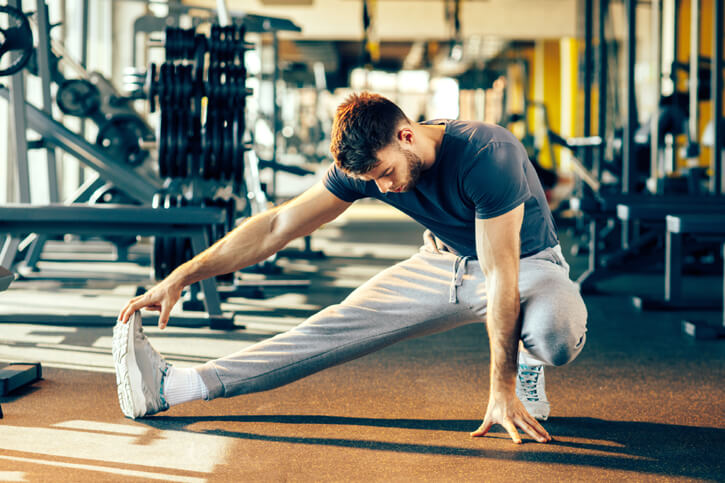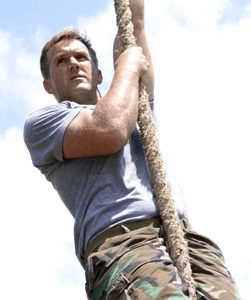Over the past 20-30 years, fitness and sports training programs have evolved in a way that yield exceptional human performance results. You may remember in the 70-80’s, a 4.5 second 40m sprint was unheard of. 300lb football players were non-existent. Now, there are 300lb football players who can run the 40m sprint in 4.6 seconds. The average weight of big players in football is 300+ lbs.
You cannot argue with results! Sports science and training is producing some of the biggest, fastest, and strongest people in human history.
Another aspect of fitness that has evolved is how athletes and active people warmup prior to exercise. Years ago, we would warm our bodies up with static stretches. Toe touches, knee bends, calve stretches, bending at the waist, arm and shoulder stretches – you name it. We used to have 15-20 different team-based stretches that we went through each day prior to practices and games.
Then that evolved to running a few laps around the field or riding a bike to warmup before you did stretching of the muscles and joints. Now, people are skipping the static stretches altogether and doing dynamic warmup stretches and joint mobility movements before and after lifting, sprinting, and endurance workouts.
So, what is the difference between the three methods of warming up and do they help to actually warm you up, build flexibility, and even prevent injury?
Static Stretching Cold
This method of warming up and stretching actually does very little of either. Warming up should involve activities that actually increase your body heat. Stretching cold or stiff muscles can actually lead to micro tears deep in the muscle fiber and connective tissues. Even though we would start off the stretch routine with a 20-30 rep set of jumping jacks, it still was not enough to effectively warmup the body. Now, I am personally a fan of static stretching, but only after a workout or after a 10-15 minute warmup working the muscles that will be involved in the prolonged activity I will be doing. In fact, I highly recommend static stretching, yoga based stretches for all parts of the body (core and limbs) for general health and joint maintenance. Plus – you cannot argue – it just feels good to stretch sometimes. Here is an excellent video on many of the static stretches that can be done – notice it is a post workout stretch routine: Static Stretch Video.
Warm Up, Then Static Stretching
Running, biking, swimming, or other forms of cardio are great ways to increase your body heat prior to stretching whether you prefer static stretches or moving into more dynamic movements to complete your warmup. The goal to warming up is to warm up! So get moving prior to pushing or pulling any stiff muscles as they will become more pliable as the body warms. Some studies have shown that is takes more than 4-6 months to make a muscle more flexible, so a long term stretching plan is recommended if you have problems with basic movements like toe touches, hips, or shoulder mobility. This method is ok, but has been labeled outdated by many sports professionals. But, yoga has been doing these static stretch holds for hundreds of years so I do not think static stretching is being kicked to the curb.
Dynamic Stretching
Dynamic movements prior to exercise or competition has become the gold standard of the warm up over the years. Major joint movements will help reduce stiffness prior to a run or heavy lifting workout. Dynamic stretching works by flexing one group of muscles to stretch the opposite group of muscles. Exercises like the butt-kicker or Frankenstein walks both flex and stretch the front and back side of the leg while working movement in the knee, hip, and ankle joints. Learning several of these movements will be beneficial to how you feel during physical activity.
Check out this excellent dynamic warm up routine.
So – which type should you do? The number one rule that most people in the fitness and sports industry will agree on is that you should be warm (increase your body temperature) prior to doing any stretching or activity. So warm up with movement first, then stretch or stretch at the end of the workout, or when you feel like you need to.
Re-posted from Military.com.
STEWART SMITH, USN, is a graduate of the U.S. Naval Academy, a former Navy SEAL, and author of several fitness books including The Complete Guide to Navy SEAL Fitness, The Special Ops Workout, Maximum Fitness, The S.W.A.T. Workout, and most recently The Navy SEAL Weight Training Workout and Tactical Fitness. Stew has trained thousands of students for Navy SEAL, Special Forces, SWAT, FBI, ERT, and many other military, law enforcement, and fire fighter professions. He is currently the Special Ops Team Coach at the US Naval Academy that prepares future candidates for SEAL, EOD, and MARSOC training and runs a non-profit called Heroes of Tomorrow where he trains people seeking tactical professions for free. Stew’s new book, 101 Best Pyramid Training Workouts, is available wherever books are sold.






